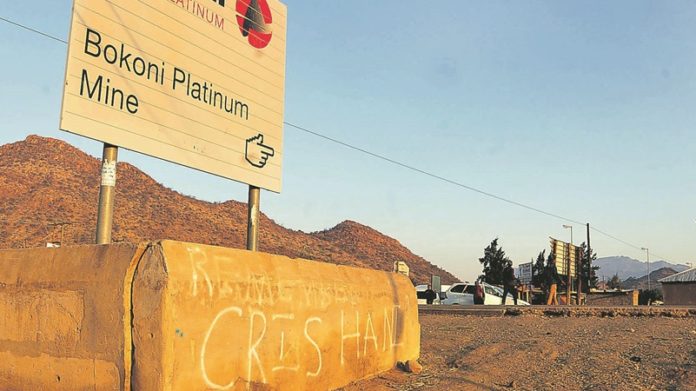
THE key factor which could make or break plans to revitalise the Bokoni Platinum mine by new owner African Rainbow Minerals (ARM) could be the geology encountered as development work opens up the unmined UG2 reef resources at the mine.
That emerged through comments from ARM CEO, Mike Schmidt at a financial year-end investment presentation on Thursday when he was asked precisely how ARM intended making the mine profitable given its poor track record.
Previous operations by former owners Anglo American Platinum and Atlatsa Resources focused on the Merensky Reef and both failed because of difficult mining conditions.
Bokoni was placed on care and maintenance in 2017. ARM bought it in December last year from Anglo American Platinum for R3.5bn and intends investing another R5.3bn over the next three years to redevelop the operation.
“We are moving to the UG2 reef because previous ore extraction from the Merensky Reef has been pretty low because of pothole intensity. That pothole intensity more than halves on the UG2,” said Schmidt.
“We will see greater extraction, higher productivity and far higher efficiencies coming out of the UG2 environment.”
Schmidt did not go into the specifics of potholing on the platinum-bearing reefs but it is a feature which caused huge problems for the former Gold Fields of South Africa during the initial development of the deep-level Northam mine which is now called the Zondereinde mine and is owned by Northam Platinum.
The mine was not able to meet production targets because of the disruption to the mining operations caused by the potholes. It also appeared that potholing got worse with depth.
According to a paper published in June 1985 in the Journal of the South African Institute of Mining and Metallurgy, potholing occurs when the Merensky – or other reef which is being mined – “suddenly slumps, cross-cutting its own footwall”.
The paper said the Merensky Reef appeared to be particularly vulnerable to potholing which created circular disturbances in the orebody ranging in size “from a few metres across and a metre or so deep to severe disturbances that may be 300m across and up to 90m deep”.
Schmidt said ARM’s aim was also to mechanise the UG2 mining operation at Bokoni through the use of “narrow reef equipment” where the orebody conditions allowed this.
“We also intend to do away with the historic trucking of ore underground and on surface and replace that up-front with conveyor belts. We also want to go on-reef mining with low profile equipment so we generate early income.
“We are also looking at the plant configuration and will put in an MF3 circuit which has shown us quite an enhancement to the recoveries”.









